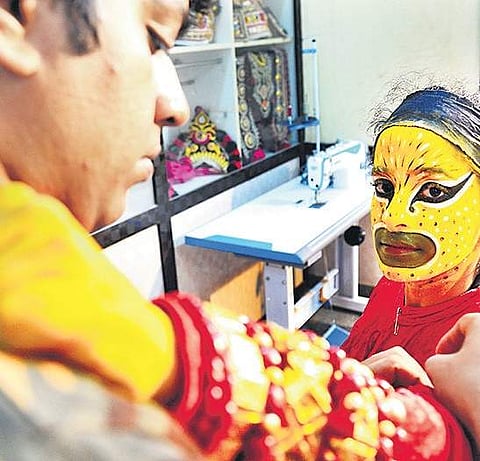

BENGALURU: Yakshagana has predominantly been a male-dominated art form, where even the characters of women have traditionally been performed by men. Breaking away from this stereotype, Karnataka Mahila Yakshagana encourages women to demonstrate this art form.
Gowri K started with a small group of four to five women in Bengaluru in 1998. “Initially, people were unsure, scared and hesitant. So, I started with a very small group and took personal interest.” Now, with over 25 professional women artistes, the group has performed in various countries such as the US, China, Germany, Dubai and across several states in India. Karnataka Mahila Yakshagana has even empanelled with Indian Council for Cultural Relations, Doordarshan and Akashvani.
The women in the group come from various professional backgrounds. From techies, bank managers, students to housewives, teachers and Bharatnatyam dancers – they all come together to perform the numerous mythological characters on stage .Gowri, one of the dancers herself, is a bank manager who learnt Yakshagana from her husband. She along with other women were the first to inspire many to join the group.
The traditional format of Yakshagana is a dusk to dawn performance. The artistes travel from one village to another, setting up makeshift tents and staying for days. This was one of the hindrances that stopped women from taking part. However, with the changing trends and format of the art form, it has enabled women to be a part of Yakshagana. Gowri says, “The traditional artistes encourage women to participate in Yakshagana.”
Some of the challenges faced by them is recognition and equal pay for all the artistes. Take for example, the musicians who play a vital role in Yakshagana, their pay is not at par with the other artistes. Since the musicians are recognised as neither traditional nor classical artistes, they are paid lesser than the classical artistes. “We need support from the government to meet the expenses of musicians, artist custom, and makeup, which come at a high price. We also need place for rehearsals, which at present take place in my house,” says Gowri. This, hopefully, will encourage and ensure more women take it up.